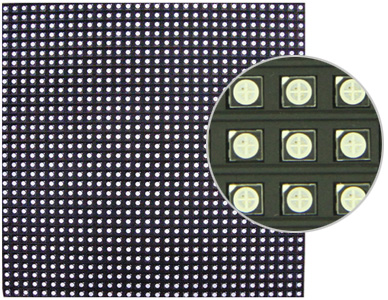Differences between LED display light sources
The LED light source is key material for LED display performance, it determines the color consistency, brightness, viewing angle, and the cost for screen. Here introduce the difference between dot matrix, DIP and SMD LED light source.
1. Dot matrix module: It is the old design, evolved from the interior pseudo-color dot matrix screen.
Advantages: low cost of raw materials, simple production process, also stable quality.
Disadvantages: poor color consistency, has mosaic phenomenon, and poor color reproduction.

2. DIP LED: In order to solve the color problem of dot matrix screen, and supply outdoor display solution, manufacturers adopt DIP LED for light source.
Advantages: better color consistency than dot matrix module; can be waterproof; and work with pixel sharing technology, also named virtual pixel technology.
Disadvantages: poor pixel mixing effect, small viewing angle, processes more complicated, demand higher antistatic level. Actual pixel resolution is difficult to achieve pixels more than 10,000 per square meter.

3. SMD LED: This solution usually for smaller pixel pith LED display.
Advantages: Good color consistency, the viewing angle is the best among the recent used light source; also with very good mixing color, can be for high resolution.
Disadvantages: Process is very difficult, and high cost, require high antistatic level.






